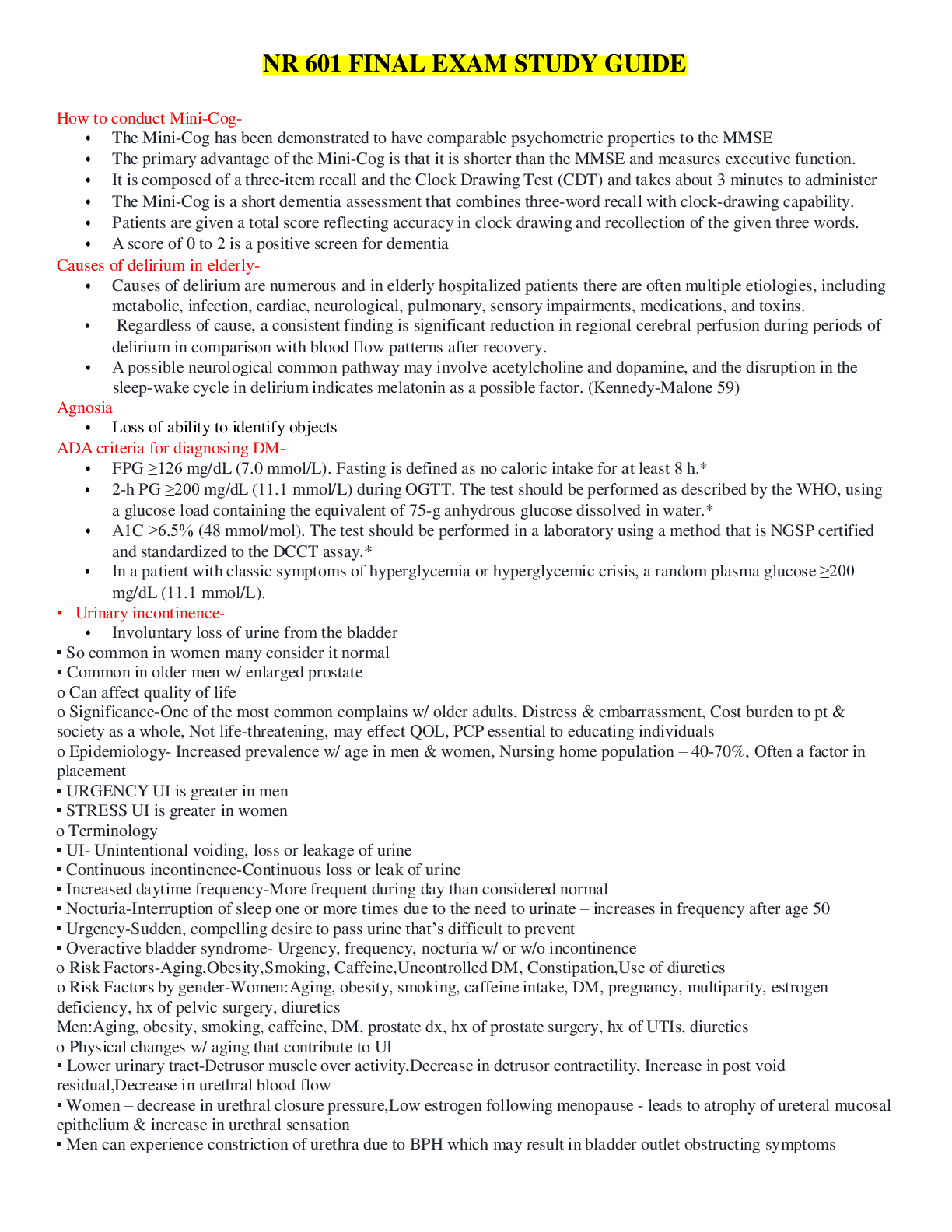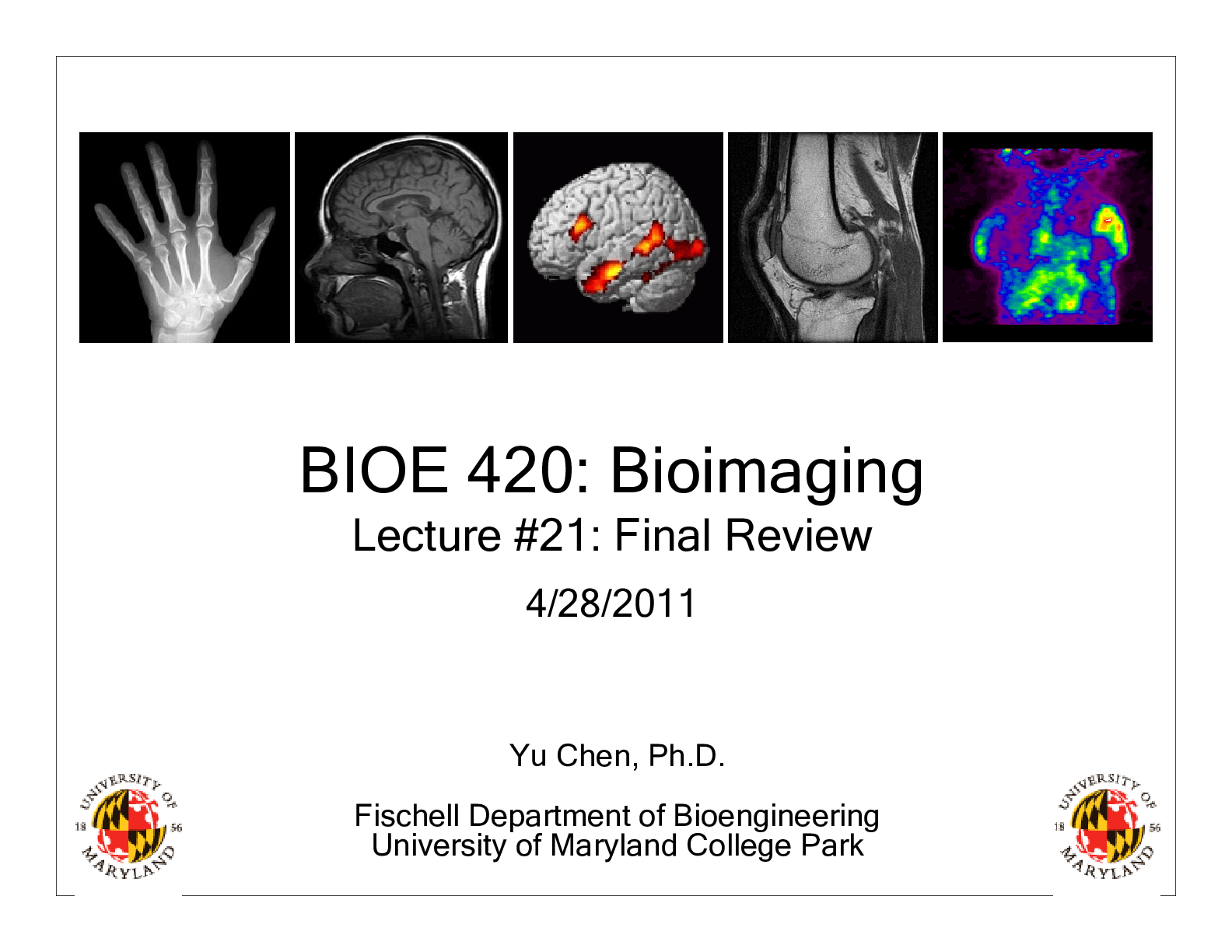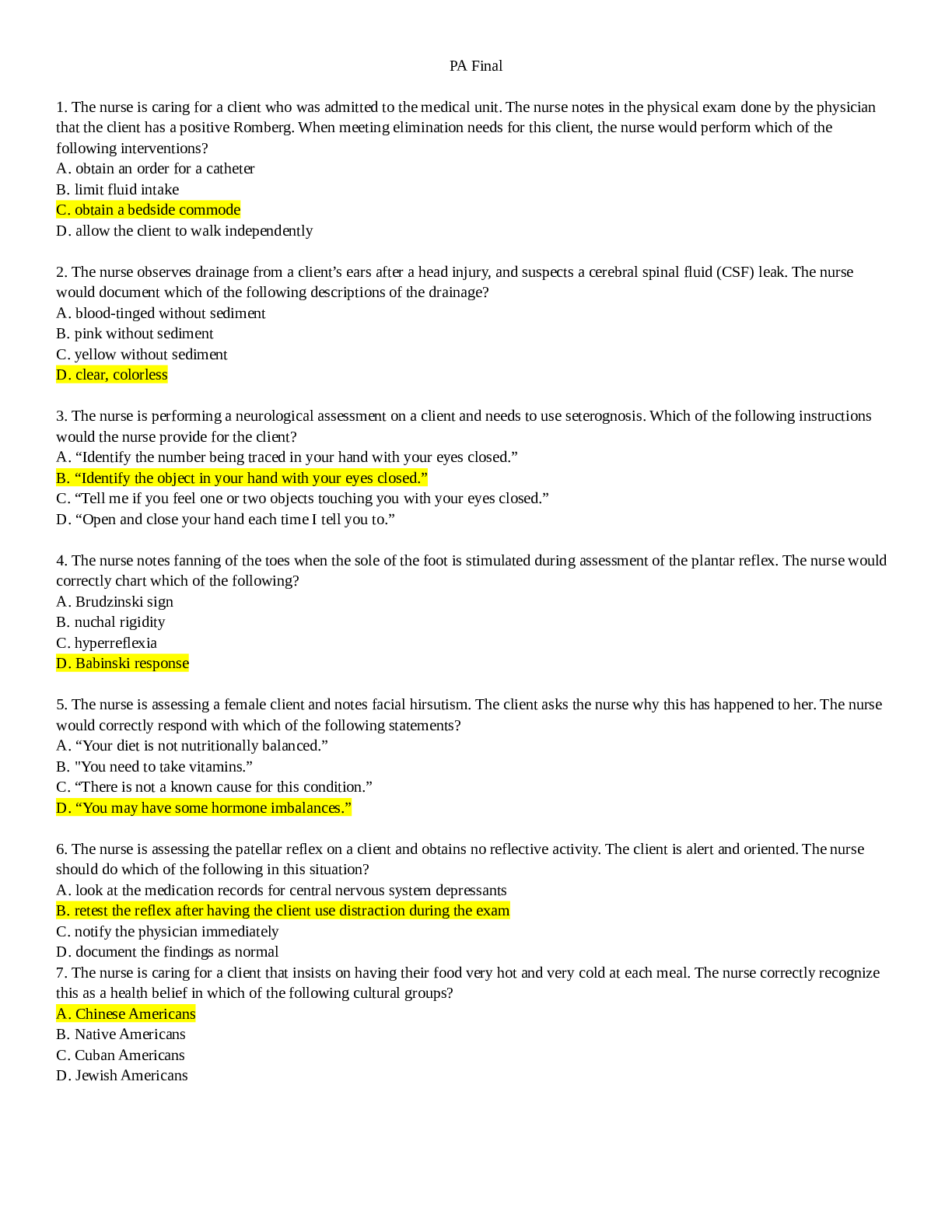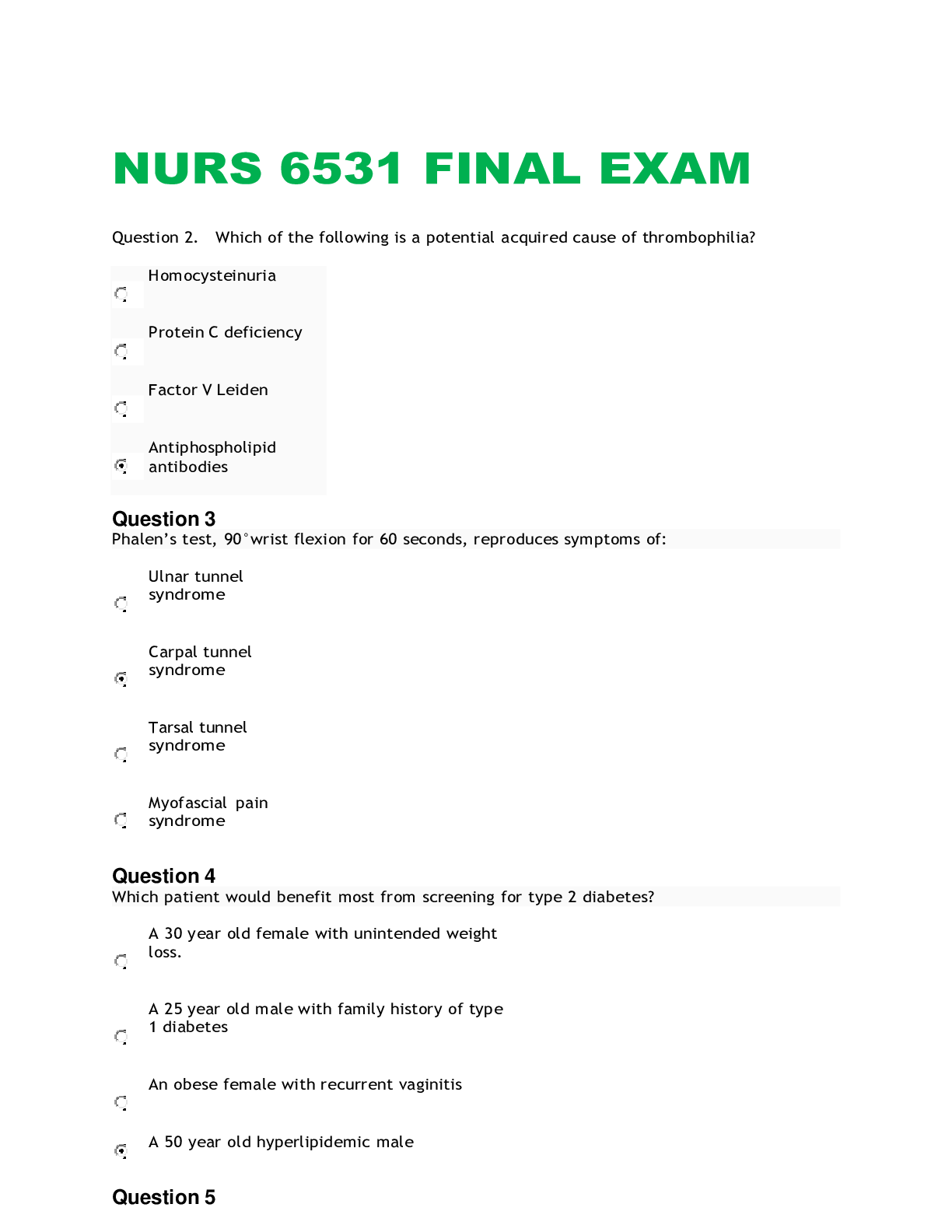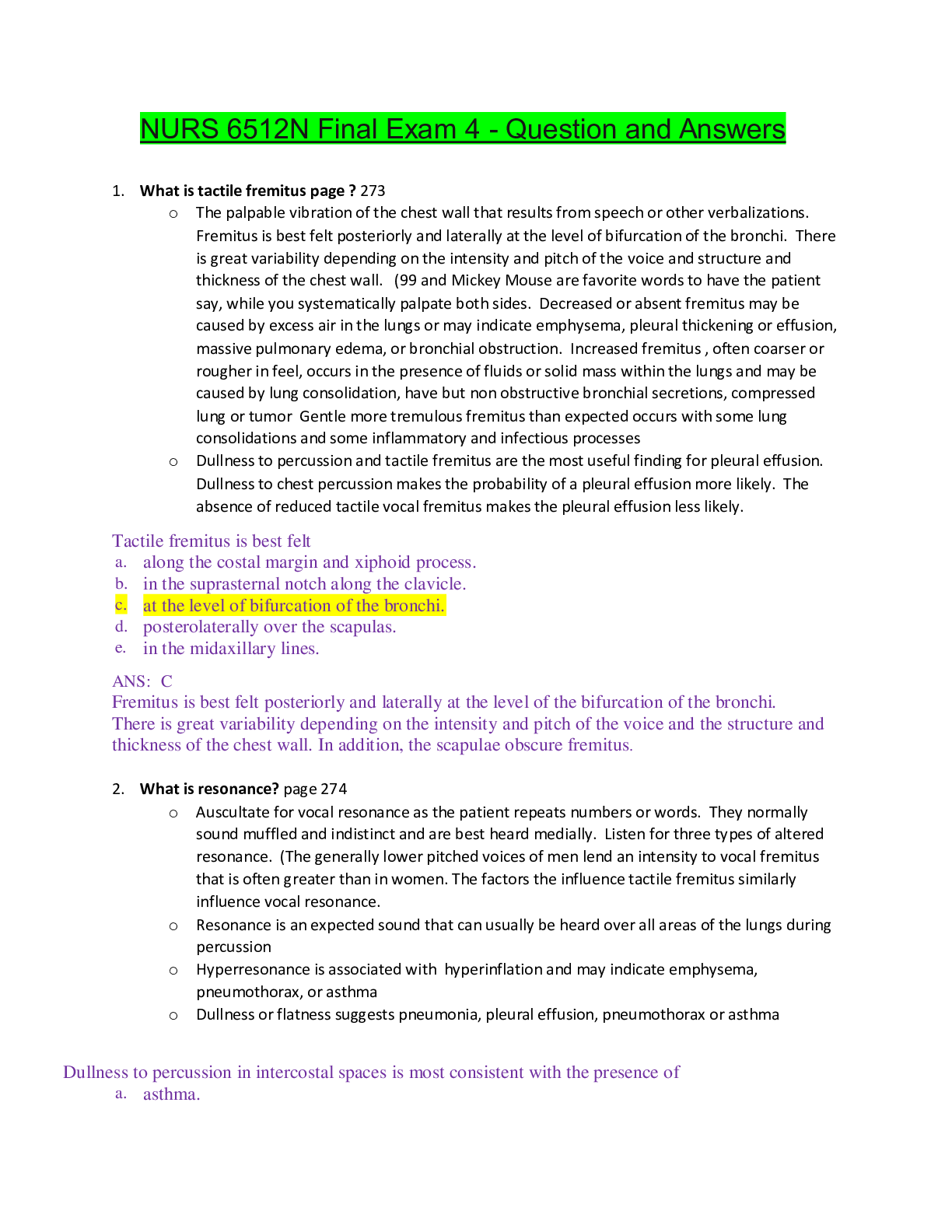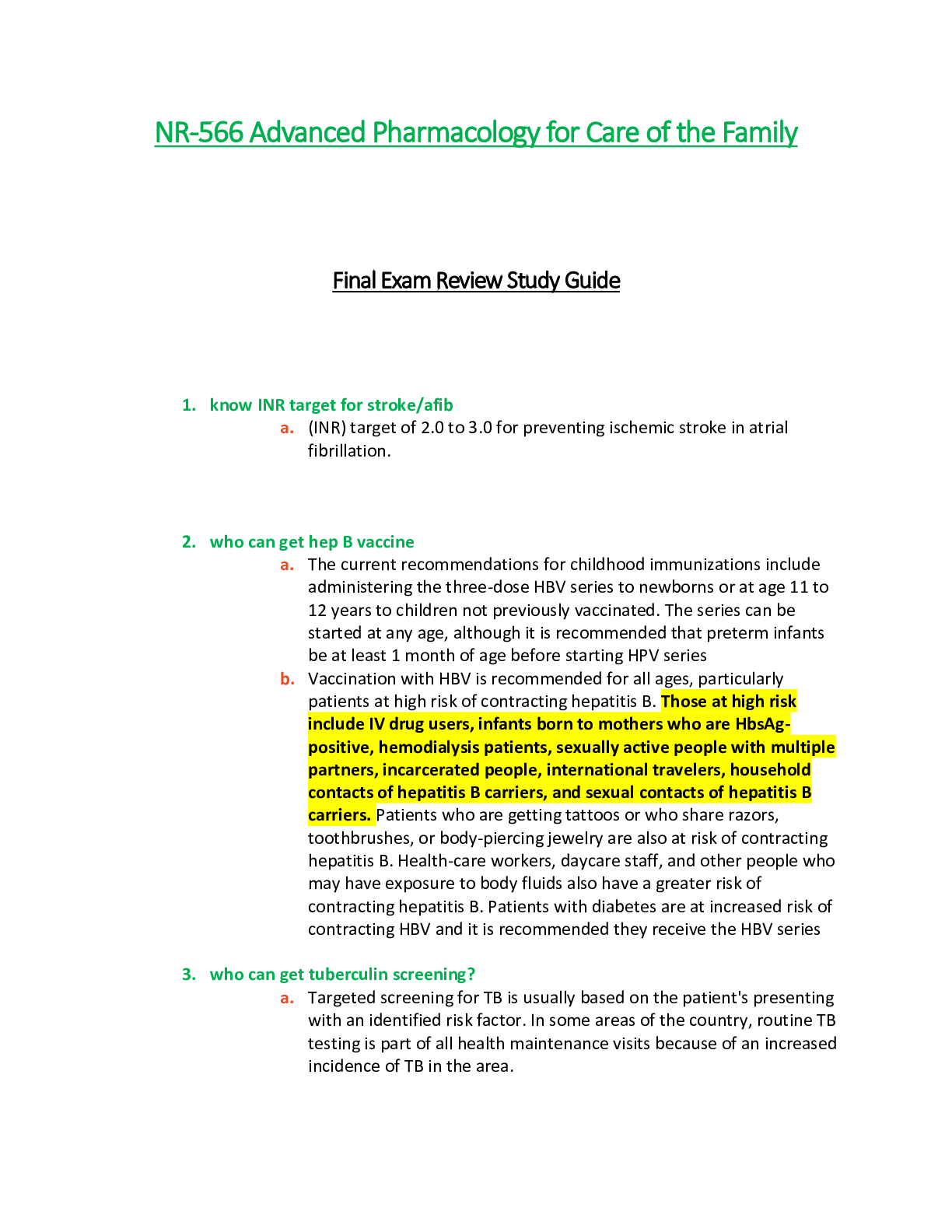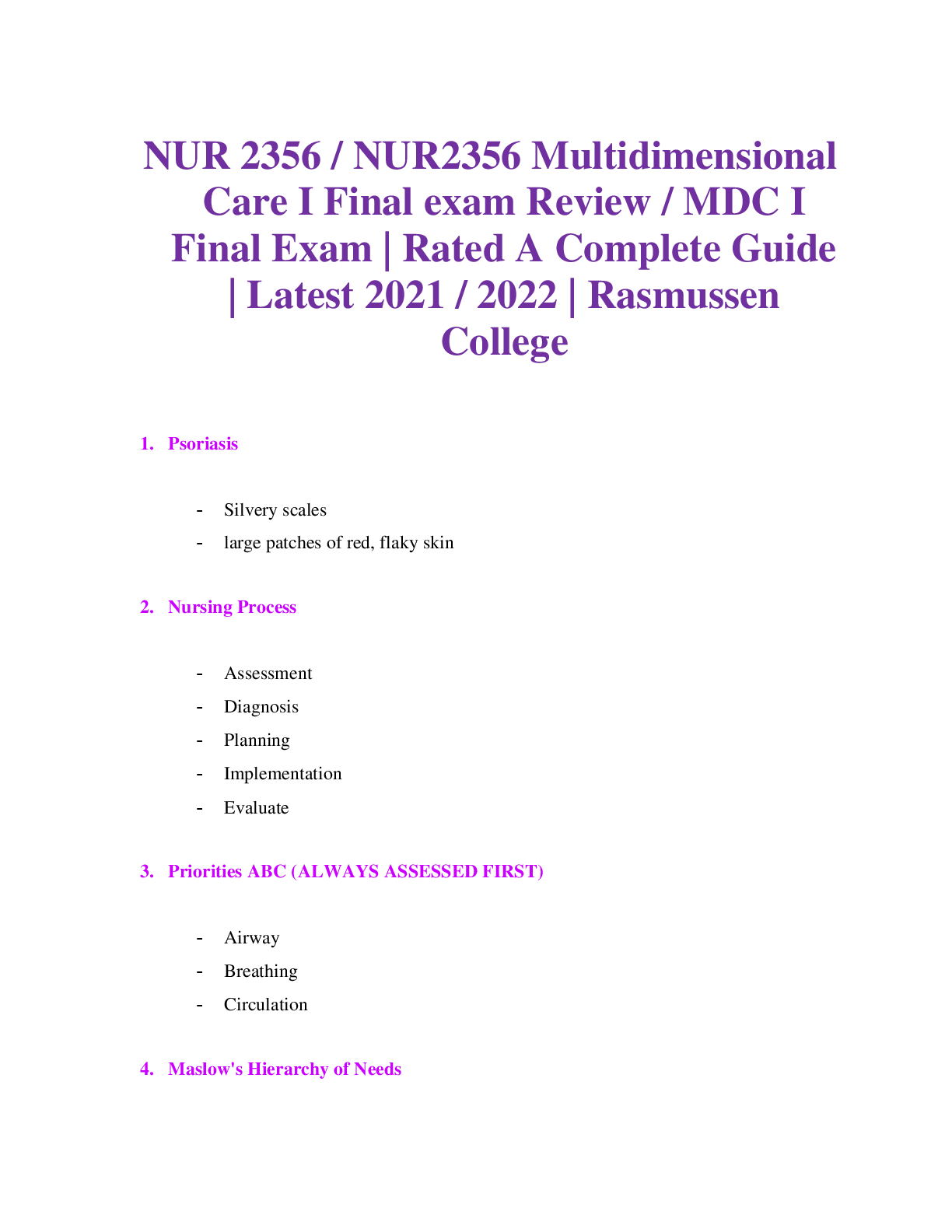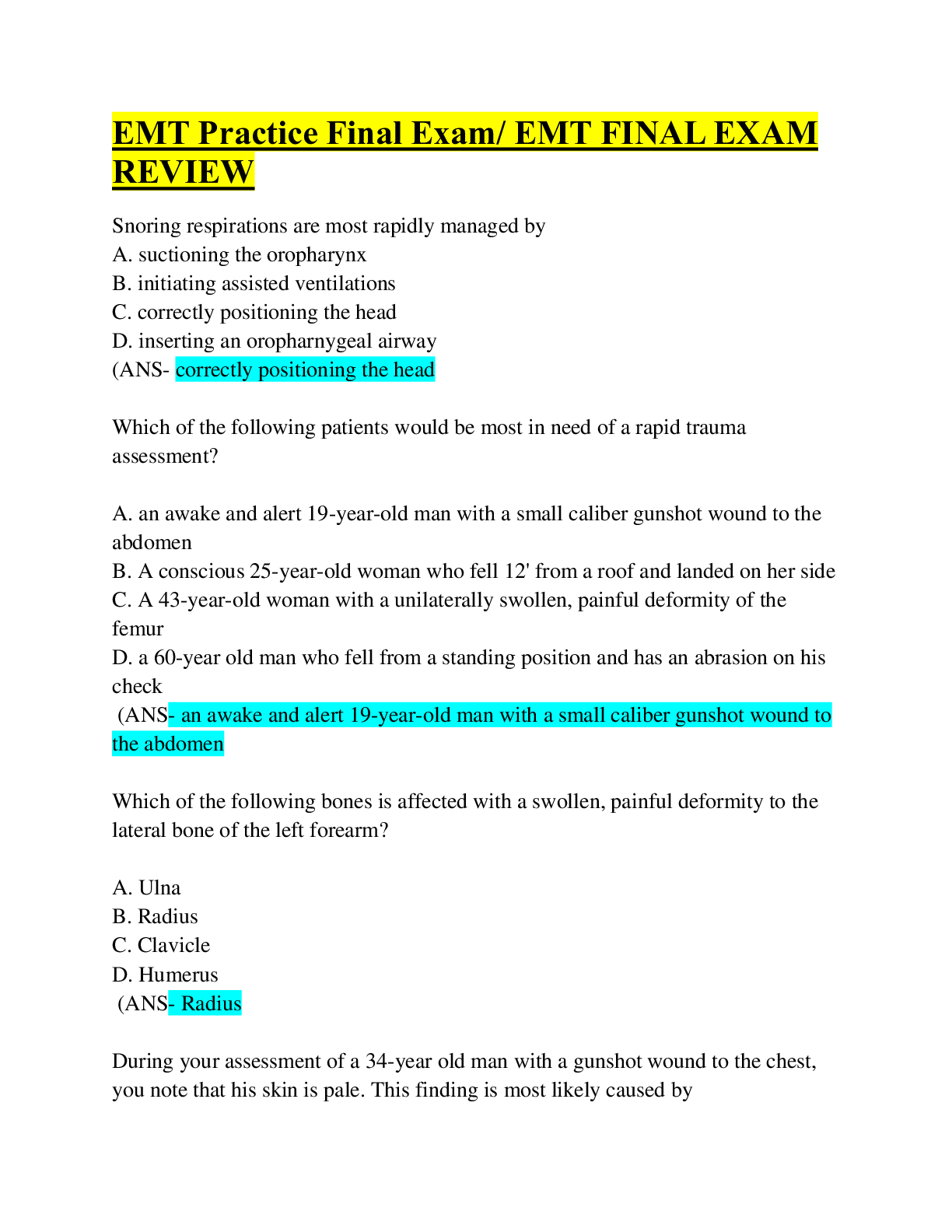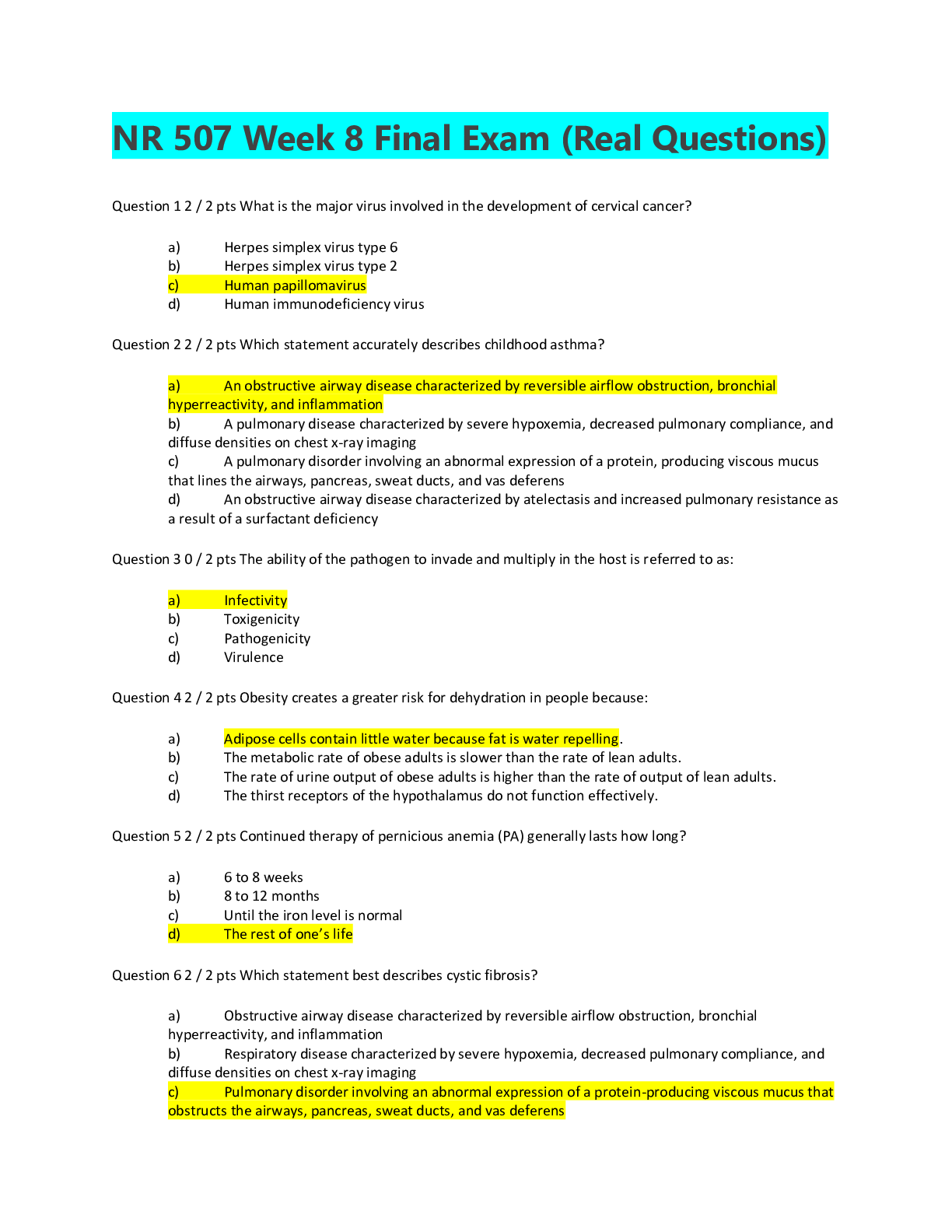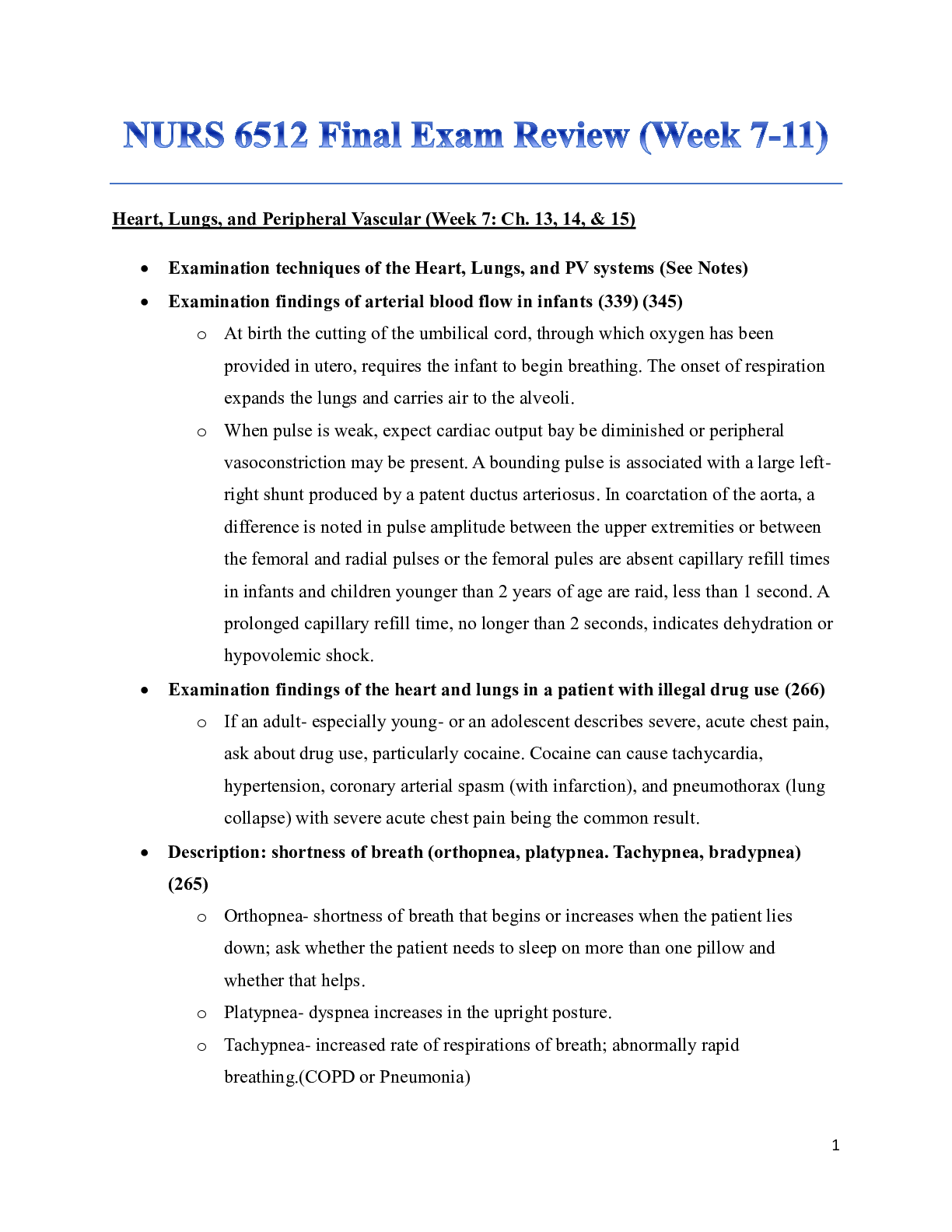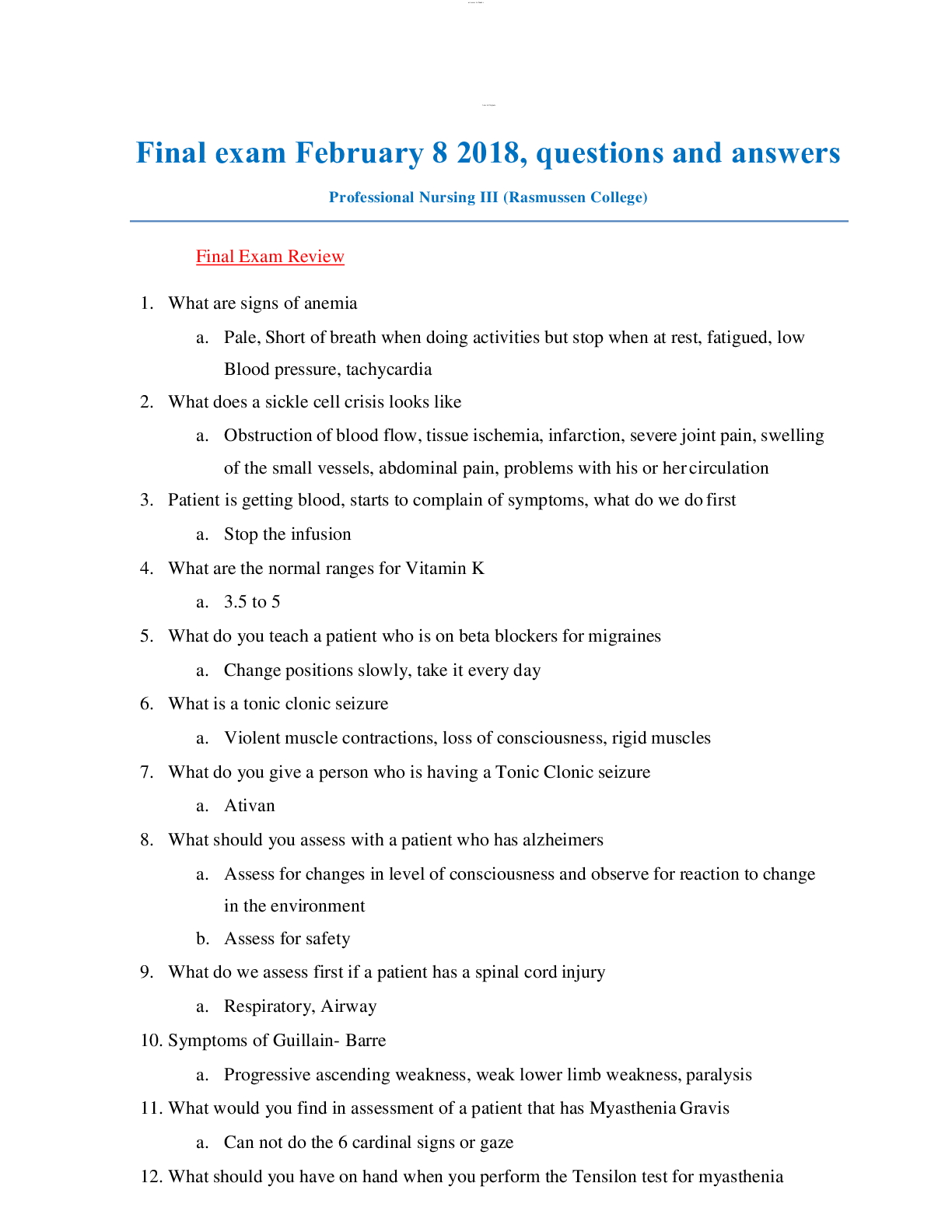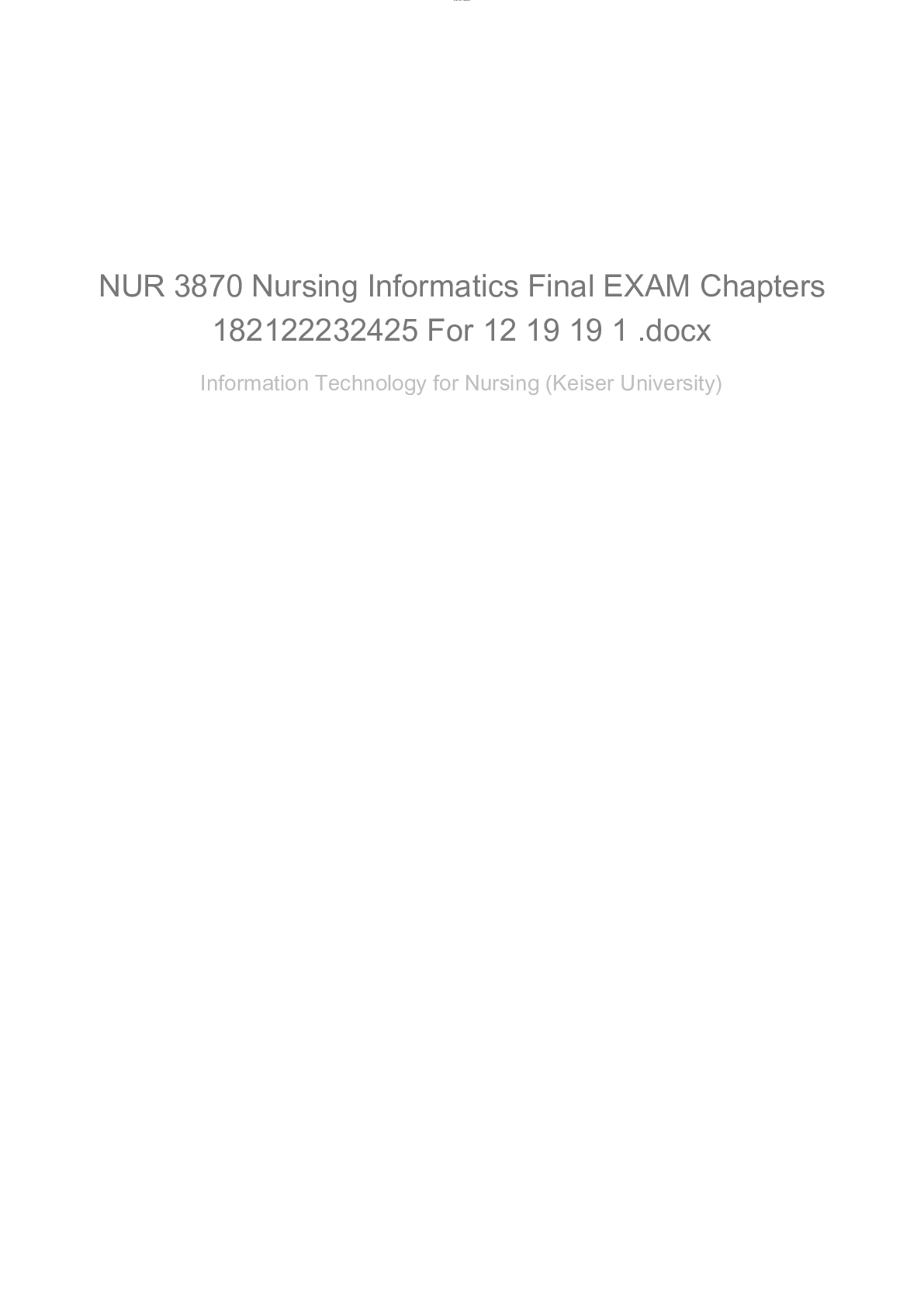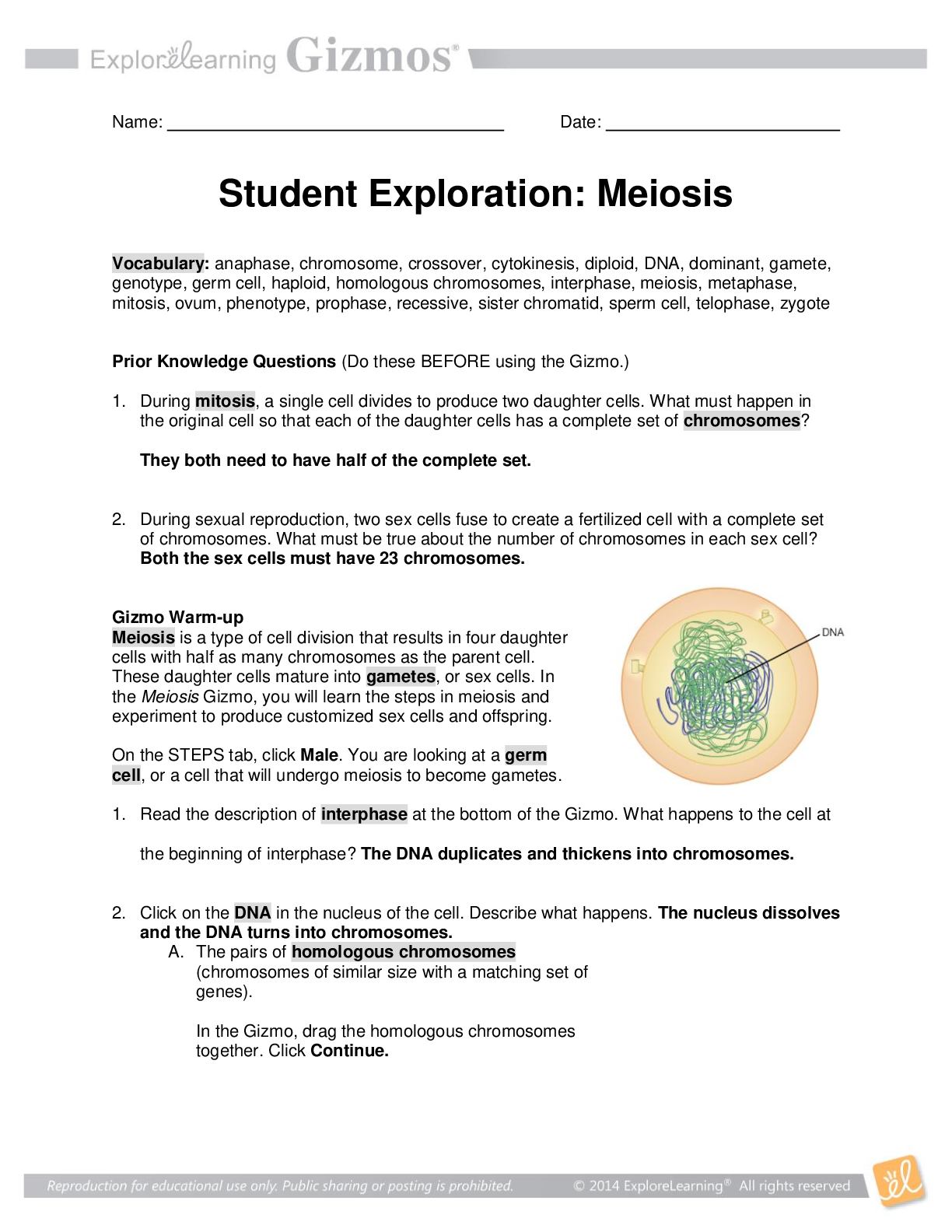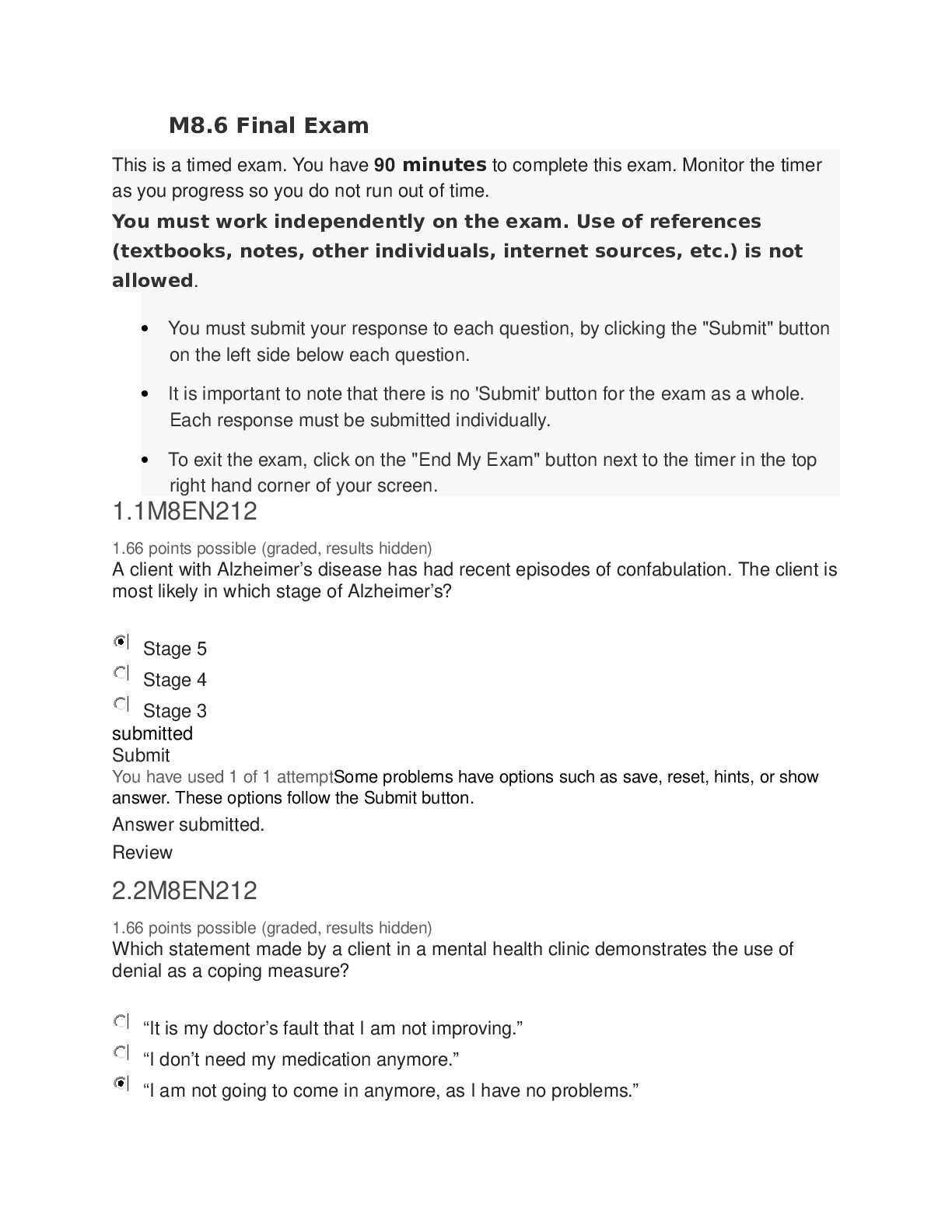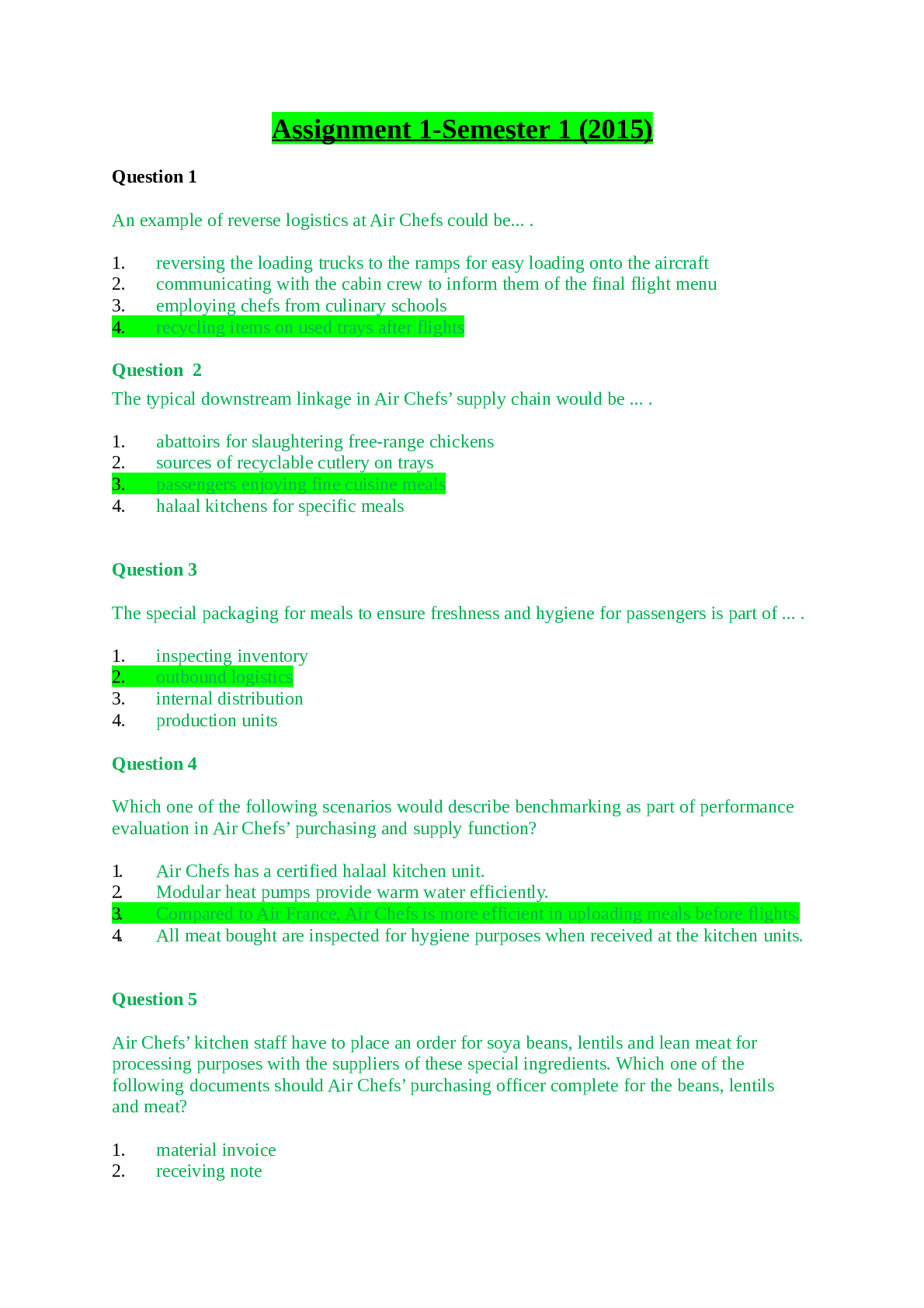*NURSING > Final Exam Review > Chamberlain College of Nursing NURSING NR 283Patho Final Review. (All)
Chamberlain College of Nursing NURSING NR 283Patho Final Review.
Document Content and Description Below
Concept Review for Patho Final Exam Vegetative state verses brain death Vegetative state Loss of awareness and intellectual function but continued brainstem function Result of diffuse ... brain damage Person unresponsive to external stimuli If consciousness recovered may have significant neuro impairment. Locked-in syndrome Individual is aware and capable of thinking but is paralyzed and cannot communicate due to brain damage (may only be able to move their eyes to say yes or no) Criteria for brain death (declared clinically and legally dead) Cessation of brain function Including function of the cortex and the brainstem Flat or inactive electroencephalogram (EEG) Absence of brainstem reflexes or responses Absence of spontaneous respirations when ventilator assistance is withdrawn Establishment of the certainty of irreversible brain damage by confirmation of cause of the dysfunction Evaluation twice by different physicians Indicators of increased ICP Brain is encased in rigid, nonexpendable skull. Fluids, blood, and CSF are not compressible. Increase in fluid or additional mass causes increase in pressure in the brain Ischemia and eventual infarction of brain tissue Increased ICP is common in many neurological problems. Brain hemorrhage, trauma, cerebral edema, infection, tumors, abnormal circulation of CSF Early signs—if cause is not removed Decreasing level of consciousness or decreased responsiveness (lethargy) 1 st sign often Severe headache From stretching of dura and walls of large blood vessels Vomiting Often projectile, not associated with food intake Result of pressure stimulating the emetic center in the medulla Papilledema (visualize w ophthalmoscope) Caused by increased ICP and swelling of the optic disc Vital signs Development of cerebral ischemia Vasomotor centers respond in attempt to increase arterial blood supply to brain (causes vasoconstriction) *known as Cushing reflex Systemic vasoconstriction Increase of systemic blood pressure—more blood to brain to relieve ischemia Baroreceptor response In carotid arteries Increased blood pressure by slowing heart rate Chemoreceptor response Respond to low carbon dioxide levels Reduction of respiratory rate Improved cerebral circulation Relieves ischemia Short time Increasing ICP causes ischemia to recur; cycle will repeat ICP continues to rise, blood pressures rises Increased pulse pressure is significant in people with ICP. (difference bt systolic and diastolic); caused by slow heart rate and intermittent rapid cycling of the Cushing’s reflex Brain tumors Space-occupying lesions that cause increased ICP Benign and malignant tumors can be life-threatening. Unless accessible and removable Gliomas form the largest category of primary malignant tumors Classified according to cell derivation and location of the tumor Primary malignant tumors rarely metastasize outside the CNS. Secondary brain tumors Metastasize from breast or lung tumors Cause effects similar to those of primary brain tumors Signs and symptoms Site of tumor determines focal signs Seizures often first sign Headaches (increased ICP), vomiting, lethargy, irritability, personality and behavioral changes, possible unilateral facial paralysis or visual problems Do not cause systemic signs of malignancy Will cause death before they cause general effects Treatment—may cause damage to normal CNS tissue Surgery if tumor is accessible Chemotherapy and radiation (many are radioresistant) Interference with blood supply Local damage and manifestations depend on cerebral artery involved Hemorrhage Increased ICP will cause local ischemia and generalized symptoms. Global cerebral ischemia Impaired perfusion of entire brain Loss of function and generalized cerebral edema Brain death if not reversed quickly TIA’s: Transient Ischemic Attack May occur singly or in a series Result from temporary localized reduction of blood flow in the brain Partial occlusion of an artery Atherosclerosis Small embolus Vascular spasm Signs and symptoms Difficult to diagnose after the attack Directly related to location of ischemia Intermittent short episodes of impaired function e.g., muscle weakness in arm or leg Visual disturbances Numbness and paresthesia in face Transient aphasia or confusion may develop Repeated attacks may be a warning sign for obstruction related to atherosclerosis [Show More]
Last updated: 1 year ago
Preview 1 out of 39 pages
.png)
Reviews( 0 )
Document information
Connected school, study & course
About the document
Uploaded On
Oct 04, 2021
Number of pages
39
Written in
Additional information
This document has been written for:
Uploaded
Oct 04, 2021
Downloads
0
Views
112

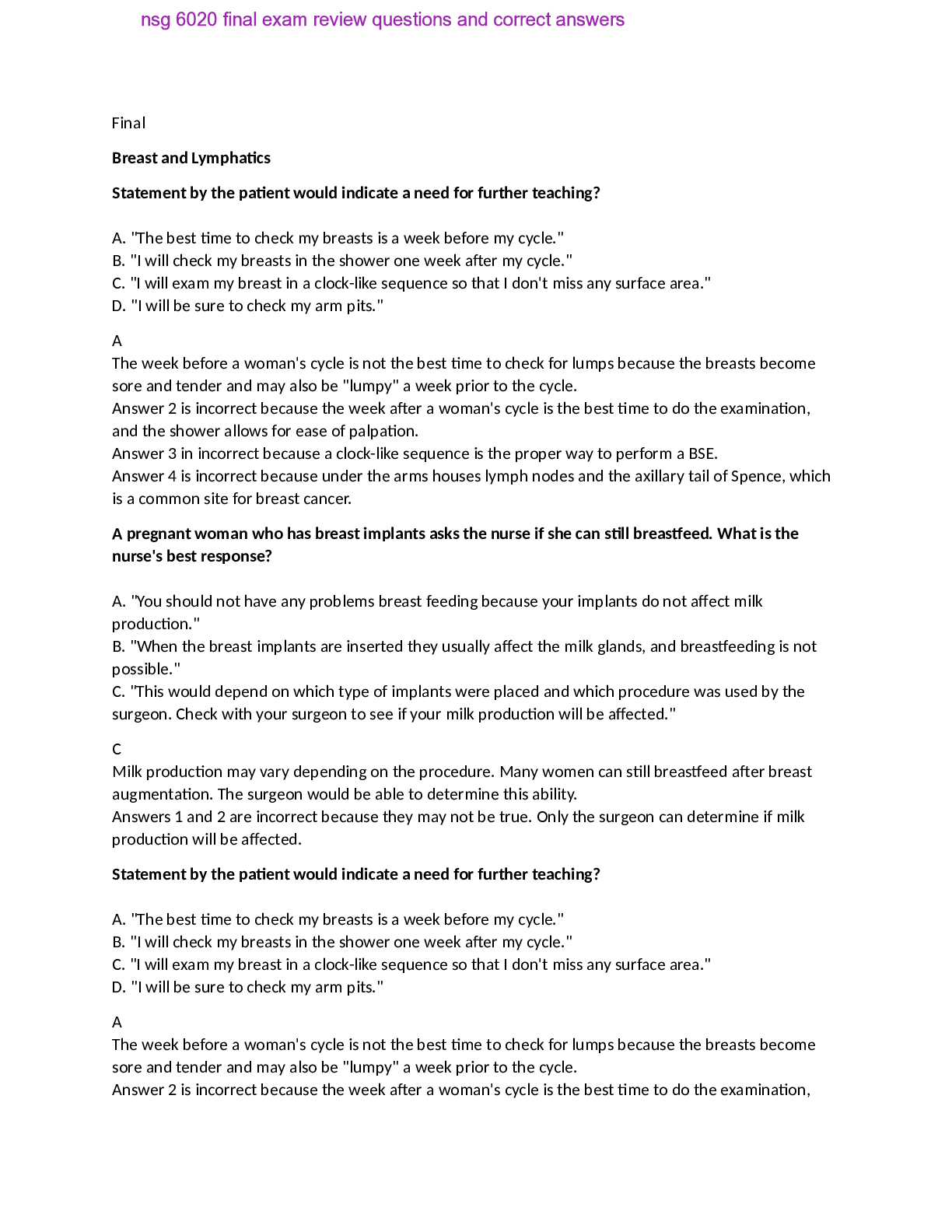

.png)
.png)


.png)
.png)

